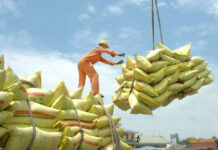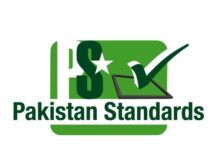LAHORE: Although it is riddled with debt and inflation, Pakistan’s economy is growing in terms of financial and economic activity. Rapid advances in technology and alternative payment systems backed by the State Bank of Pakistan and its supportive policies are creating space for infrastructural development in the country as commercial banks locked in competition expand their existing infrastructure.
The State Bank of Pakistan (SBP) in its ‘Payment Systems Review’ for the third quarter of the financial year 2018 has provided a statistical snapshot of the payment systems in the country, showing growth in various traditional and modern payment systems.
With numbers to support the claim, digital channels as a form of payment system have been on the rise in the country. As faster alternatives for banking services, these channels provide an easy and efficient payment solution for the population.
Payment systems can be divided into three categories.
- Pakistan Real Time Interbank Settlement Mechanism (PRISM).
- eBanking channels such as Real time online Branches (RTOBs), ATMs, POS, Internet Banking, Mobile Phone Banking, Call Centres/IVR Banking, and ecommerce facilitating retail value payments.
- Paper-based system
Comparing the overall volume, and value of the transactions rendered in Quarter 3 FY18 with Quarter 2 FY2018, the volume of country’s total payments transactions grew by 3.2 per cent compared to the previous quarter with a decline in 3.3 per cent in the value of transactions.
However, the volume and value of retail eBanking transactions grew by 5.0 per cent and 2.2 per cent respectively, whereas the volume of PRISM transactions grew by 6.7 per cent with a decline of 3.8 per cent in value of transactions and the volume of Paperbased transactions grew by 0.4 per cent and value of transactions showed a decline of 3.7 per cent compared to the previous quarter.
Payment Systems Infrastructure
As on end Quarter January-March, 2018 there are 14,850 banks branches reported by 45 Banks/Microfinance Banks, out of which 117 are overseas branches. All branches in the country, except 23 are providing online banking services to their customers.
There are 13,835 ATMs and 53,509 POS machines in the country. In addition to these, Banks are providing Internet, Mobile Phone and Call Centers/IVR Banking facilities.
For the quarter under review, 446.5 thousand transactions worth Rs90.1 trillion were conducted by PRISM. These transactions showed a 6.7 per cent quarterly growth in volume but showed a decline of 3.8 per cent in value when compared to the previous quarter.
Performance of eBanking
eBanking channels including RTOBs, ATM, POS, Mobile Phone, Internet and Call Centers Banking as well as e-Commerce altogether processed 196.2 million transactions worth Rs11.9 trillion.
These transactions showed a quarterly growth of 5.0 per cent and 2.2 per cent in volume and value respectively compared to the previous quarter. RTOBs has the highest share of 83.5 per cent in value of transactions whereas, the highest share w.r.t. the volume 62.0 per cent goes to transactions processed by ATMs in the country.
Real time online branches (RTOBs) added another 100 branches, reaching a total of 14,710. These branches processed 43.8 million transactions worth Rs10 trillion.
ATMs
Commercial banks deployed another 426 ATMs reaching a total number of 13,835 ATMs in the country. In total ATM transactions, cash withdrawals accounted for 94.8 per cent of all transactions with an average ticket size of 11,906 for an ATM transaction.
Internet Banking
In Pakistan, 26 Banks are offering Internet Banking Service and there are 2.9 Internet Banking users registered with Banks. During the quarter under review, 8.4 million transactions of value Rs332.8 billion were processed through Internet Banking.
Mobile Banking
In total, 19 Banks are providing Mobile Phone Banking facility to their customers’ with the number of register Mobile Phone Banking users 3.1 million. These users processed 5.9 million transactions of value Rs.112.8 billion using Mobile Phone Banking Apps.
Call Centres
Due to the rapid increase of Internet and Mobile Phone Banking in the country, the overall usage of Call Centers/ IVR banking has been showing a declining trend. During the quarter under review, 68.0 thousand transactions value Rs2.1 billion were processed by Call Centers/ IVR Banking.
E-commerce Merchants
With the growth of 13 per cent, the number of e-Commerce Merchants registered with Banks reached to 1,023. These merchants processed 0.8 million transactions valuing Rs4.4 billion during the quarter under review.
Payment Cards
By the end of March 2018, the total number of payment cards issued in Pakistan reached to 40.1 million from 39.3 million, showing a quarterly growth of 1.8 per cent compared to the previous quarter.
The number of payment cards added along with their percentage share can be categorized as below:
- Debit Cards – 21.0 million (52.4 per cent)
- Proprietary ATMs – 8.5 million (21.3 per cent)
- Credit Cards – 1.4 million (3.6 per cent)
- Pre-Paid cards – 0.2 million (0.6 per cent)
- Social Welfare Cards – 8.9 million (22.2 per cent)
During the Quarter under review, 142.7 million transactions of valuing Rs1.6 trillion were processed by these Cards, of which transactions processed by Debit Cards has the highest share of 80 per cent in volume and 85 per cent in value of transactions.
Lastly, 118.1 million transactions worth Rs38.8 trillion were processed through Branch banking and paper-based instruments. These transactions showed a quarterly growth of 0.4 per cent in volume of transactions and a decline of 3.7 per cent in value of truncations compared to previous quarter.
























